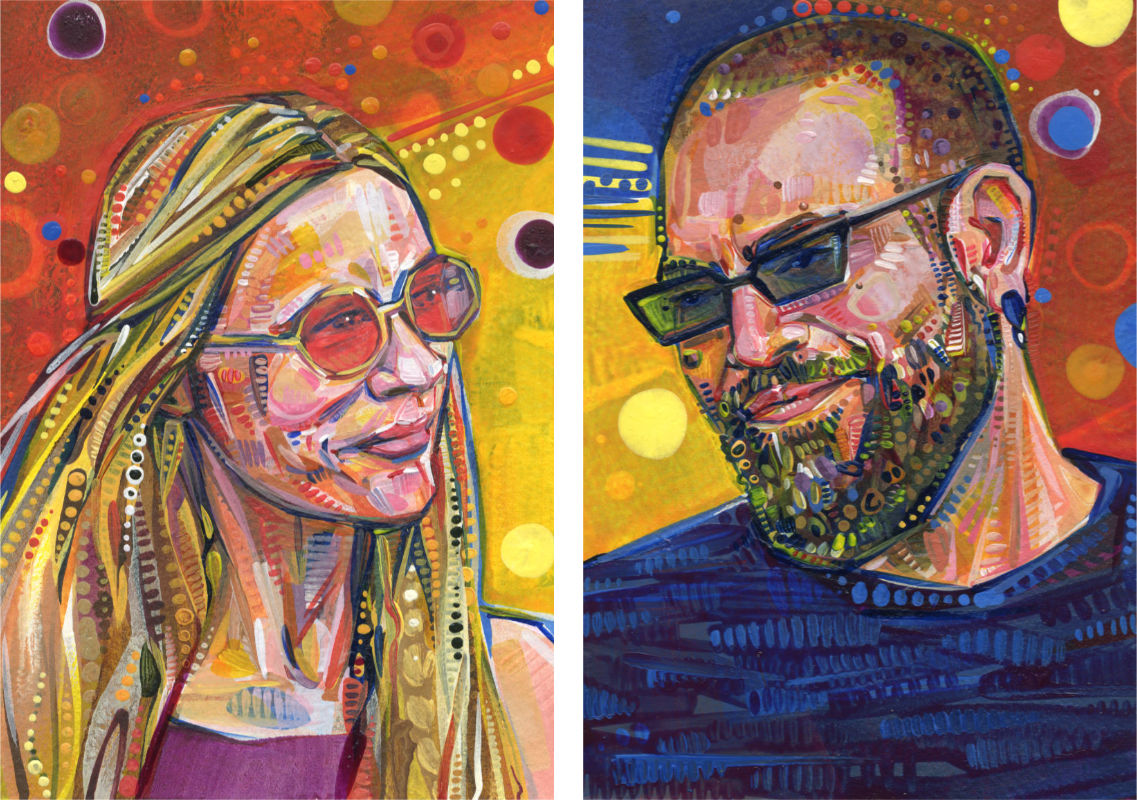Blog / 2023 / Mistake #11: People Pleasing
November 24, 2023
Last May, my art career turned twenty, and, to celebrate, I’ve been talking about mistakes I’ve made in the last two decades, things like blaming myself for being too nice. It may seem like a weird way to mark the occasion, but, if I had to point to one reason why I’m still making art after all this time, it’s that I refused to let these everyday mistakes beat me.
Today’s installment of the Blunder Blowout is all about struggling to find the line between being kind to others and compromising who you are in order to try to make them happy.
It’s the difference between complimenting someone’s appearance because you genuinely think her glittery makeup looks nice and prattling on about everything you love about this person you just met because you’re getting the vibe that she thinks you’re into her spouse. (Yes, this just happened to me, and I went way overboard. I’m pretty sure that, at some point, she even wondered if I was flirting with her. For the record: I wasn’t. I was too scared of her hating me to think clearly about whether or not I found her attractive.)
Of course, both in life and in creativity, the belief that you must please others to the point of losing yourself can be more than just embarrassing. It can ruin everything: your self-esteem, your relationships, and your art.

Case in point: portraits. I may have been painting people for twenty years, but, except for a heyday from 2005 to 2015 when I don’t remember worrying excessively about the subjects’ responses, I’ve been way too anxious about how they’d feel about my version of them.

I won’t go too deep into my distress here, but suffice it to say that, with Jess and Cord—the people whose portraits are featured in this post—as with everyone I paint these days, even the subject’s most minute reactions to a portrait interest me more than they should.

Jess and Cord
2022
acrylic on paper
7 x 10 inches (combined dimensions)
“But,” you might say, “I don’t paint portraits, so I’m safe!“
Alas, no. You might be compromising who you are without even realizing it.
Because, if you’re even thinking about selling your art, you’re bringing another person into your creativity, just like a portraitist does—only your response to them is even more complicated, because you don’t know who they are. From the moment a potential buyer enters your mind, the possibility of their existence—their expectations and your understanding of them—will impact the way you create. The effect will vary depending on how much of a people pleaser you are, but wanting to make money with your art will always influence your creativity.
Here are the two best ways I’ve found for toning down the people pleasing in my own art practice:
- Know your goals.
- Know your audience.
Start by making a list of what your art is, along with what it’s not. Specify things like your preferred palette and subjects. Answer questions along the lines of: “do you welcome other people’s feedback about where a piece is going during your process?” For inspiration, I share some of the boundaries I have around custom art in this video.
Knowing your goals is about figuring out who you are as an artist. And the process of laying out your objectives might even help you discover new directions as you reflect on things that you aren’t currently into, but that you’d like to be doing. It’ll also help with business stuff: writing grant proposals, putting together marketing materials, and drafting a commission contract are all easier when you know your goals.
Not everyone is going to appreciate your art. Sometimes it’s a matter of culture or personality: for example, many people are uncomfortable thinking too hard about politics so they’re never going to like art that addresses current events. Sometimes it comes down to taste: for example, abstract art does not pique the interest of those who see it as exceptionally messy wallpaper.
Either way, your audience is never going to be the proverbial “everybody!” that many artists like to claim. You need to figure out who you’re making your art for ASAP, and this article includes a big list that should help you get a little closer.
Knowing your goals and your audience are especially important if you’re on social media. The power of “likes” on these apps tends to drive artists to make art that garners more attention, handcuffing their creativity to some corporate concept of what’s hot. The fact is that people pleasing is always a mistake, and it’s very easy to fall into it if you’re posting your art on socials. That’s just one of the reasons why I deleted all my profiles.
There will soon be twenty mistakes published to celebrate my twenty years, but, for now, you can read about these:
- Putting off making changes.
- Publishing art that’s not my best.
- Trying to be like everyone else.
- Worrying about being too sensitive.
- Blaming myself for being too nice.
- Confusing bravery with confidence.
- Not realizing that people want me to succeed.
- Hiding my queer identity for years.
- Feeling guilty about wanting to earn money with my art.
- Not asking for help enough.
- People pleasing.
- Being afraid of feedback.
- Not listening enough.
- Believing in the big break.
- Thinking my positivity would make my art better.
- Getting on social media in the first place.
- Expecting my creativity to be linear.
- Worrying about cheating in art.
- Being afraid to start.
Maybe this post made you think of something you want to share with me? Or perhaps you have a question about my art? I’d love to hear from you!
To receive an email every time I publish a new article or video, sign up for my special mailing list.
If you enjoyed this post, Ko-fi allows you to donate. Every dollar you give is worth a bajillion to me!



